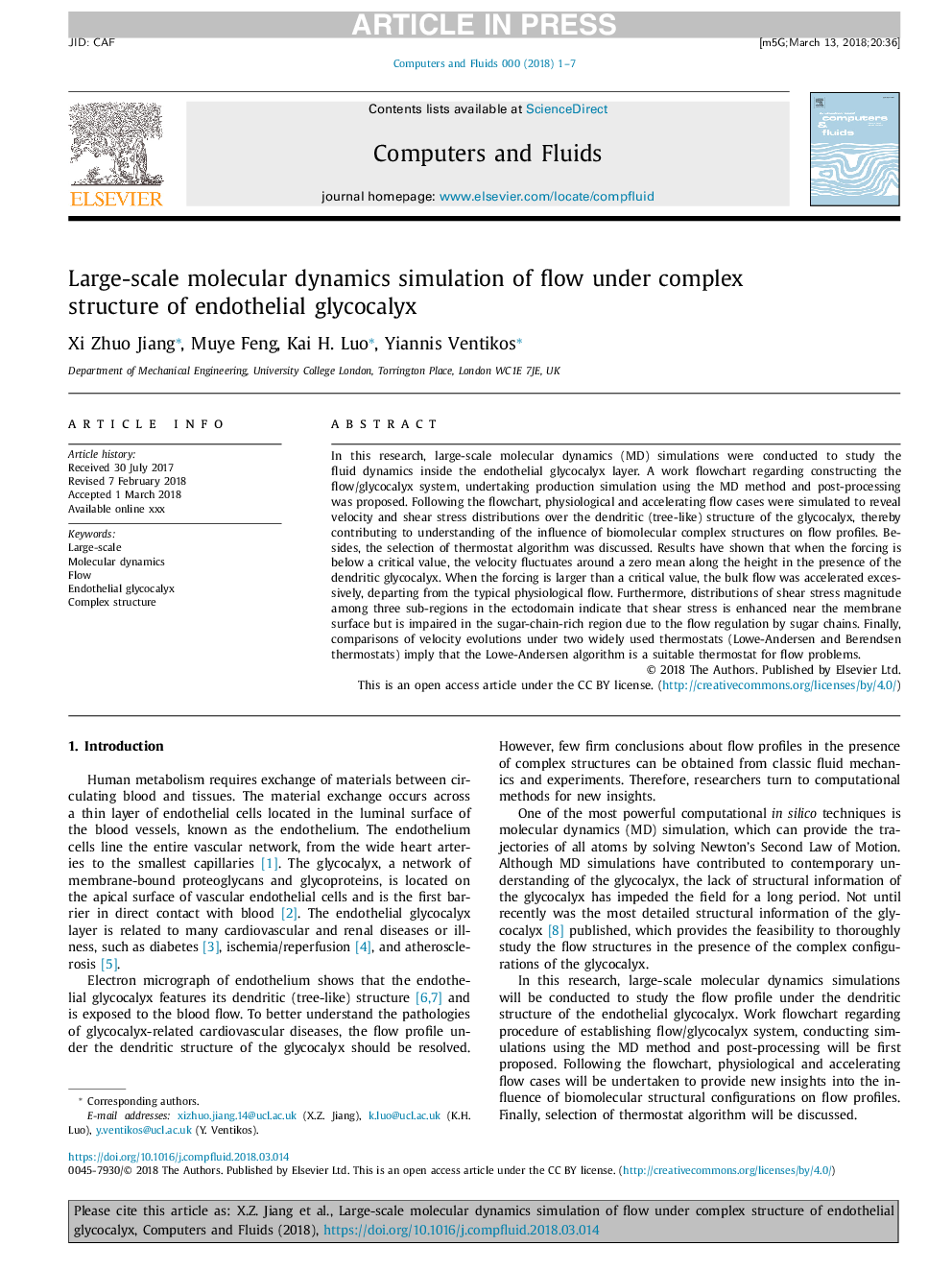| Article ID | Journal | Published Year | Pages | File Type |
|---|---|---|---|---|
| 8942113 | Computers & Fluids | 2018 | 7 Pages |
Abstract
In this research, large-scale molecular dynamics (MD) simulations were conducted to study the fluid dynamics inside the endothelial glycocalyx layer. A work flowchart regarding constructing the flow/glycocalyx system, undertaking production simulation using the MD method and post-processing was proposed. Following the flowchart, physiological and accelerating flow cases were simulated to reveal velocity and shear stress distributions over the dendritic (tree-like) structure of the glycocalyx, thereby contributing to understanding of the influence of biomolecular complex structures on flow profiles. Besides, the selection of thermostat algorithm was discussed. Results have shown that when the forcing is below a critical value, the velocity fluctuates around a zero mean along the height in the presence of the dendritic glycocalyx. When the forcing is larger than a critical value, the bulk flow was accelerated excessively, departing from the typical physiological flow. Furthermore, distributions of shear stress magnitude among three sub-regions in the ectodomain indicate that shear stress is enhanced near the membrane surface but is impaired in the sugar-chain-rich region due to the flow regulation by sugar chains. Finally, comparisons of velocity evolutions under two widely used thermostats (Lowe-Andersen and Berendsen thermostats) imply that the Lowe-Andersen algorithm is a suitable thermostat for flow problems.
Related Topics
Physical Sciences and Engineering
Engineering
Computational Mechanics
Authors
Jiang Xi Zhuo, Feng Muye, Luo Kai H., Yiannis Ventikos,
